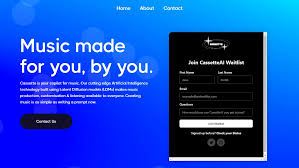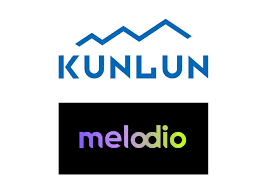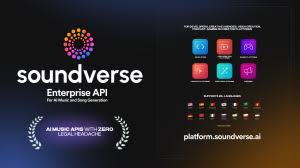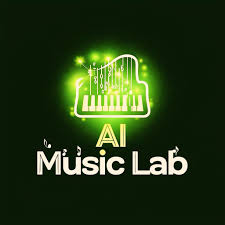When OpenAI released Jukebox, it marked a major milestone in AI-generated music. For the first time, a model could generate raw audio with vocals, lyrics, and style conditioning in the voice of real or fictional artists. But years later, while newer platforms like Suno AI and Udio are going viral for their polished, ready-to-share songs, OpenAI Jukebox has remained mostly in research circles.
So what held it back? In this article, we’ll explore the limitations of OpenAI Jukebox—technical, creative, and practical—and how its legacy still shapes what comes next in AI music generation.

A Quick Recap: What Was OpenAI Jukebox Designed to Do?
At its core, Jukebox is a neural net that generates music as raw audio, trained on over 1.2 million songs with paired lyrics, genres, and metadata. Its architecture used VQ-VAE-2 (Vector Quantized Variational Autoencoders) and transformers in a three-tier setup:
High-level: Captures long-term musical structure
Mid-level: Models rhythmic/melodic patterns
Low-level: Adds texture and audio fidelity
It could:
Generate full music tracks from scratch
Accept lyrical prompts
Imitate styles of specific artists or genres
Despite all this, most users never got to use Jukebox outside a GitHub repo.
Core Limitations of OpenAI Jukebox
1. Excessive Computational Demands
One of the biggest limitations is hardware dependency. Even simple generations could require:
A GPU with at least 24GB VRAM
Several hours of compute time
Expertise in managing dependencies and environments
This made the model nearly inaccessible to hobbyists, indie musicians, or casual users—unless they were backed by research institutions or cloud credits.
2. No Public Interface or GUI
Unlike today’s platforms that offer one-click web interfaces, Jukebox never came with a user-friendly dashboard. Users had to:
Clone GitHub repositories
Write custom Python scripts
Debug tensor operations manually
This barrier excluded non-coders from experiencing its capabilities.
3. Lack of Compositional Control
While Jukebox could generate stunning audio, it offered very little user control over structure. For example:
No ability to define verse, chorus, bridge
No timeline or DAW-like interface
Lyrics were interpreted loosely and sometimes ignored
Compared to modern AI music platforms where users can control genre, mood, and even chord progressions, Jukebox was more like a black box.
4. Distorted or Dreamlike Vocals
Because Jukebox generates audio frame-by-frame, its outputs often sounded:
Warped
Lo-fi
Surreal (almost like a dream or hallucination)
This made the music more suitable for art experiments than for commercial release or streaming playlists. The vocal quality lacked clarity and pronunciation often faltered.
5. No Commercial-Ready Licensing or Support
OpenAI released Jukebox under an open research license, with no support or monetization pathway:
No royalty-free license
No commercial rights
No usage agreements with labels or publishers
In contrast, tools like Boomy, Suno, and Mubert now offer built-in licensing and streaming monetization options.
What Comes Next: The Evolution of AI Music Beyond Jukebox
Despite its shortcomings, OpenAI Jukebox laid the technical foundation for modern AI music tools. Its contributions influence everything from audio synthesis architecture to genre-specific voice modeling.
Here’s where the industry is heading:
1. Real-Time Song Generation with Lyrics and Vocals
Platforms like Suno AI and Udio have taken Jukebox’s concept further by enabling:
Text-to-full-song generation
Realistic vocals
Support for lyric inputs and remixing
They run in real-time, even on mobile devices.
2. Interactive Music Tools with Structure Control
Newer tools give users DAW-like control:
Choose song sections (intro, verse, chorus)
Set BPM, key, mood
Generate stems for multi-track editing
This turns AI music from a black box into a co-creative partner.
3. Seamless Integration with Streaming and Distribution
Boomy and Mubert allow users to:
Publish songs to Spotify and YouTube
Monetize tracks via ads and licensing
Create royalty-free soundtracks for games and films
This fills the gap Jukebox never addressed—distribution.
4. Smarter Multimodal Models
With advancements like MusicLM, Riffusion, and Text-to-MIDI transformers, AI can now:
Compose, play, and describe music
Combine text, image, and audio data
Understand genre evolution over time
These tools are leading toward cross-domain generative systems that blend music with visuals and storytelling.
FAQ: OpenAI Jukebox Limitations & Future
Q1: Is OpenAI Jukebox still usable in 2025?
Yes, but only via GitHub or community-run demos on Hugging Face. It’s not hosted by OpenAI anymore.
Q2: Can I build commercial music using Jukebox?
No. The model outputs are under a research license and not intended for commercial use.
Q3: Are Jukebox-style models still relevant?
Yes, as technical benchmarks. Most modern music AIs use lessons from Jukebox in their architecture and design.
Q4: What tools have replaced Jukebox?
Suno AI, Udio AI, Boomy, AIVA, and MusicLM are the leading successors.
Q5: What is the biggest legacy of Jukebox?
It proved that raw audio generation from lyrics and genre is possible, opening the door for real-world applications in AI music.
Final Thoughts: From Research Demo to Real-World Music Tools
OpenAI Jukebox may not be the future of music creation, but it served as a critical stepping stone. It showed the world that deep neural nets can compose, sing, and simulate musical style—something unimaginable just a decade ago.
What comes next is faster, smarter, more accessible, and commercially viable. But Jukebox deserves credit for starting the AI music revolution that’s now powering entire creative industries.
Learn more about AI MUSIC








